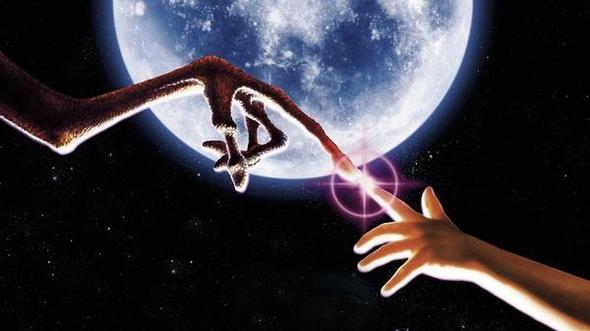

A poster of the science fiction blockbuster "ET" co-produced and directed by Steven Spielberg. It tells the story of a lonely boy who befriends an extraterrestrial, dubbed "E.T." who is stranded on Earth.
NASA has announced the news mankind has long been waiting for: they've finally found a planet that's a lot like Earth.
The NASA space-based Kepler telescope discovered the planet, labeled Kepler 452-b, which is described as Earth's bigger cousin.
"Liquid water is commonly thought to be one of the key prerequisites for extraterrestrial life." Liquid water is essential to all known life forms said Zheng Yongchun, associate fellow of National Astronomical Observatories, Chinese Academy of Sciences(CAS).
Newly-discovered planet Kepler 452-b is in the habitable zone, which means it could have liquid water or ice because it has a similar orbit to Earth, and its star almost definitely emits the type of light capable of supporting plant life
Zheng said Kepler 452-b could nurture life in terms of probability; after all, astronomers have identified 1,030 planets that could orbit their stars at a distance capable of supporting life.
However, humans had not yet found direct evidence of extraterrestrial life on other celestial bodies in the solar system.
If human beings discovered the existence of intelligent life on the exo-planet, should we be capable to go and visit them?
"With radius of 100,000 to 150,000 astronomical units (1 astronomical unit is equal to 150 million kilometers), the solar system is a very large space."
Zheng Yongchun said that the greatest distance that human’s spacecraft could reach is about 50 astronomical units away. "Therefore, humans cannot fly out of the solar system so far."
Ping Jinsong, fellow of National Astronomical Observatory, CAS said so far the fastest flying deep space probes - "New Horizons" spacecraft has flown five billion kilometers beyond, to continue their efforts they can fly to 10 billion kilometers.
"For a manned spacecraft, interstellar travel distance will be much more limited." At present, people can stay on the space station up to a year. "If we bring enough water and food, humans can have a 500 day round-trip to Mars," Ping Jinsong said.
In addition, the newly found planet is about 1,400 light-years away from the solar system.
"At the speed of the New Horizons spacecraft, about 59,000 km/h (37,000 mph), it would take approximately 26 million years to get there," said Zheng.
"Searching for extrasolar planets is seeking refuge for mankind in the future,” Zheng Yongchun said, "because humans will eventually go extinct, like dinosaurs did." (en.people.cn)

86-10-68597521 (day)
86-10-68597289 (night)

52 Sanlihe Rd., Xicheng District,
Beijing, China (100864)

